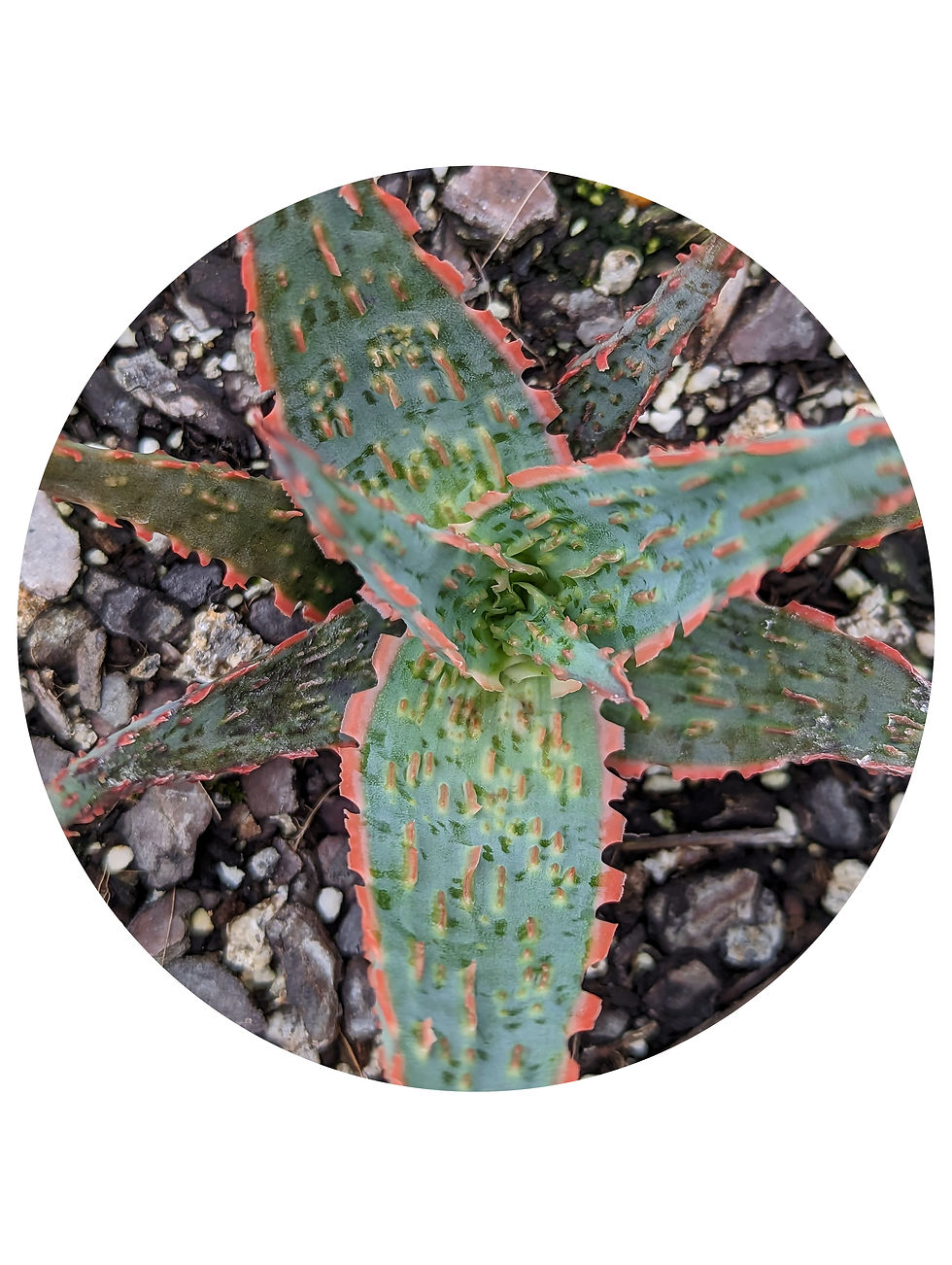Aloe - Fish Series Stingray (Hybrid)
Aloe 'Stingray', part of the Fish Series of hybrid Aloes, is a captivating succulent celebrated for its distinctively patterned and often colorful foliage. This particular cultivar forms rosettes of relatively broad, strap-like leaves that taper to a point. The leaves exhibit a striking combination of colors and textures, often displaying a base of bluish-green or grey-green overlaid with contrasting spots, bars, and sometimes raised tubercles in shades of orange, red, and white. The leaf margins are typically lined with prominent, sharp teeth that can be quite colorful, adding to its unique and somewhat dramatic appearance.
Key Features of Aloe 'Stingray' (Fish Series Hybrid)
- Broad, Strap-Like Leaves: Forms rosettes of wide, elongated leaves that narrow towards the tip.
- Bold Spotted and Barred Patterns: The leaf surfaces are decorated with a prominent pattern of spots and transverse bars in contrasting colors.
- Striking Coloration: Exhibits a base of bluish-green or grey-green with bold markings in shades of orange, red, and white.
- Colorful Sharp Toothed Margins: Leaf edges are lined with distinct, sharp teeth that are often tinged with red or orange.
- Relatively Small to Medium Size Rosettes: Individual rosettes remain a manageable size for container cultivation, while the plant may produce offsets over time.
- Potential for Offsets: Mature plants may produce offsets or "pups" from the base.
- (Flowering not visible): Mature plants can produce tall flower spikes with tubular flowers.
Care for Your Aloe 'Stingray' (Fish Series Hybrid)
- Light: Thrives in bright, indirect sunlight. Too much intense, direct sun can sometimes stress the plant, while insufficient light can lead to duller colors and stretched growth.
- Soil: Requires well-draining soil to prevent root rot. A commercial cactus or succulent mix is ideal.
- Watering: Water thoroughly only when the soil is dry to the touch. Aloe are drought-tolerant but susceptible to overwatering. Reduce watering significantly during the dormant winter months.
- Temperature: Prefers moderate temperatures and is generally not frost-tolerant. Protect from freezing conditions.
- Humidity: Adapts well to typical household humidity levels. Good air circulation is beneficial.
Maintenance for a Thriving Aloe 'Stingray' (Fish Series Hybrid)
- Removing Dead Leaves: Regularly remove any dead or dried leaves from the base of the rosettes.
- Repotting: Repot every 1-2 years or when the plant has outgrown its container. Choose a pot that is only slightly larger with drainage holes. Spring or early summer is the best time for repotting.
- Pest Control: Monitor for common succulent pests like mealybugs and scale. Treat any infestations promptly.
- Fertilizing: Generally does not require heavy feeding. A diluted balanced liquid fertilizer can be applied sparingly during the active growing season (spring and summer).
Propagation Methods for Expanding Your Collection
- Offsets (Pups): The most common and easiest method. Aloe 'Stingray' often produces offsets that can be carefully separated from the mother plant once they have developed their own roots. Allow the cut surfaces to callus over for a day or two before potting them individually.
Aloe 'Stingray', a captivating member of the Fish Series hybrids, is prized for its boldly patterned and colorful foliage with distinctively toothed margins. Its unique appearance makes it a wonderful addition to any succulent collection.
* Picture and information intended only as a guide. Size and colours of plants will vary, not any 1 plant is exactly the same and minor variations will occur.
** All plants will be posted bare rooted.

